The Seminar was attended by Mr. Nguyen Minh Triet - former Politburo member, former President; Prof. Dr. Nguyen Xuan Thang - Member of the Politburo, Chairman of the Central Theoretical Council, Director of the Ho Chi Minh National Academy of Politics; Mr. Nguyen Thanh Nghi - Member of the Party Central Committee, Minister of Construction; Mr. Vu Hai Quan - Member of the Party Central Committee, Director of Viet Nam National University Ho Chi Minh City; leaders of Ministries, committees, branches, scientists and researchers.
On Binh Duong province's side, there were the attendance of Mr. Nguyen Van Loi - Member of the Party Central Committee, Secretary of the Provincial Party Committee, Head of the Provincial Delegation of National Assembly Deputies; Mr. Nguyen Hoang Thao - Permanent Deputy Secretary of the Provincial Party Committee; Mr. Vo Van Minh - Deputy Secretary of the Provincial Party Committee, Chairman of the Provincial People's Committee (PPC) and nearly 1,000 delegates are leaders and managers at the provincial and district levels.
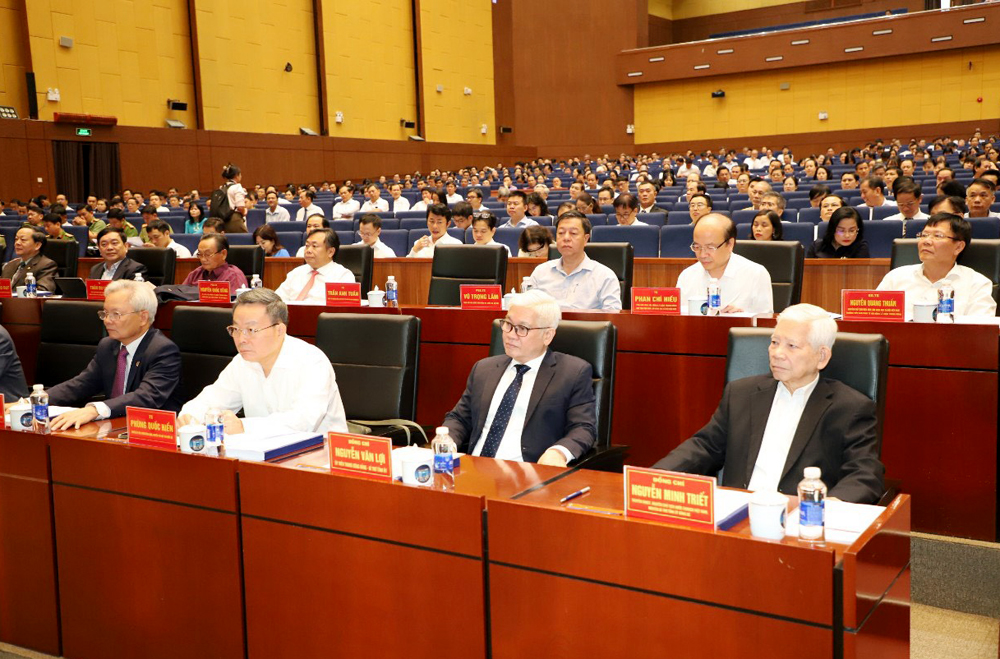
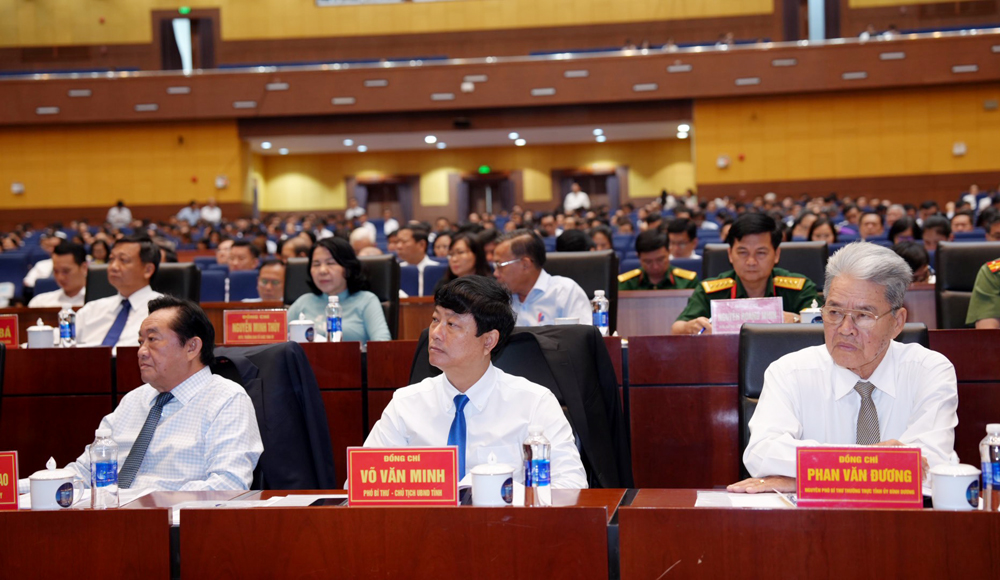
Delegates attend the Seminar
Transform with right steps
Binh Duong was separated from Song Be province from January 01, 1997. After more than 25 years of construction and development, Binh Duong has transformed itself strongly with many outstanding results, becoming a bright spot in economic growth with impressive GRDP increases over the years, i.e., one of the 5 highest budget-collecting localities in the country. In 1997, Binh Duong's GRDP accounted for 1.25% of the country's GDP, in 2015 it accounted for 4.6% of the country's GDP and in 2020 the number was 4.9%. By 2023, the province's GRDP scale has increased more than 117 times compared to 1997. The province's economic structure is shifting towards increasing the proportion of industry and services and reducing the proportion of agriculture.
The focus on industrial development is the highlight of Binh Duong's development model. To date, the province has had 29 industrial parks in operation with an occupancy rate of over 95%. Attracting foreign investment of Binh Duong reached more than 40.3 billion USD, ranking second in the country after Ho Chi Minh City.
The province's infrastructure has made great progress, i.e., being one of the TOP localities with the best results in terms of industrial park infrastructure and road infrastructure. 80-94% of district and urban roads have been asphalted. Binh Duong has soon completed the main segments of Ring Road 3 and Ring Road 4 passing through the province, directly integrating into the main intra-provincial trunk roads, such as My Phuoc - Tan Van connecting towards the seaport and international airport.
The urbanization rate of Binh Duong by the end of 2022 was 84.32%, ranking second after Da Nang's (87.45%). It was higher than Ho Chi Minh City's (77.77%), and Ha Noi's (49.05%).
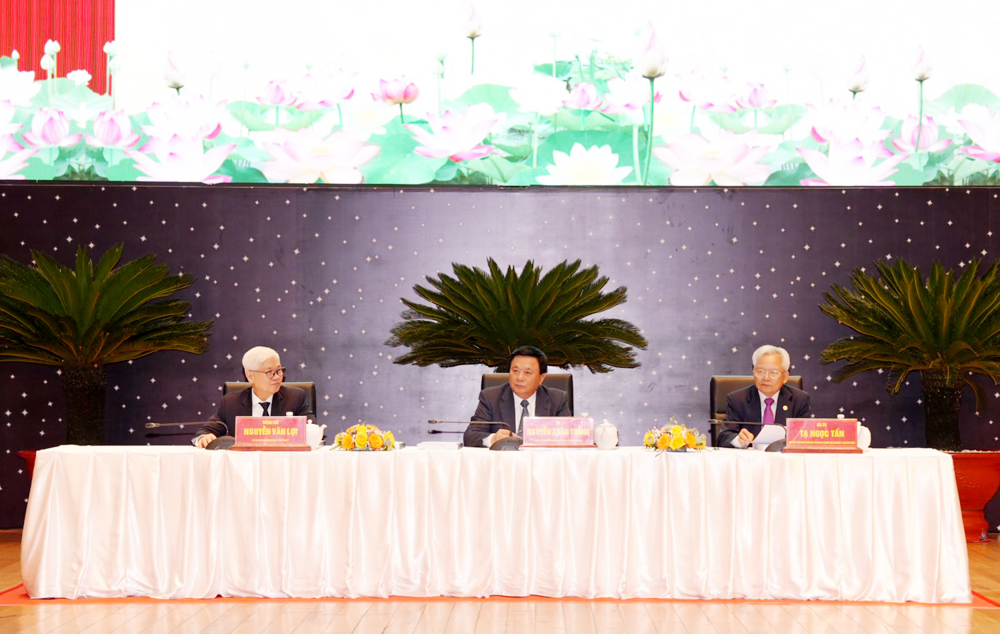
Prof. Dr. Nguyen Xuan Thang (in the middle) - Member of the Politburo, Chairman of the Central Theoretical Council, Director of the Ho Chi Minh National Academy of Politics, Mr. Nguyen Van Loi (on the left) - Member of the Party Central Committee, Secretary of the Provincial Party Committee, Head of the Provincial Delegation of National Assembly Deputies and Prof. Dr. Ta Ngoc Tan (on the right) - former member of the Party Central Committee, Permanent Vice Chairman of the Central Theoretical Council chair the Seminar
The strong and lively development of Binh Duong over the past quarter of a century is not a spontaneous development process but has been oriented and adjusted with appropriate goals, directions, and steps through each Provincial Party Congress. Mr. Nguyen Hoang Thao - Permanent Deputy Secretary of the Provincial Party Committee said that right in the first Congress of the Provincial Party Committee, Binh Duong had been fully aware of the local strengths and basic limitations in comparative advantage. Since then, Binh Duong has shaped its economic growth model based on industrial and service growth.
Notably, the policy of attracting domestic and foreign investment, as well as forming and developing industrial parks is a comprehensive strategic policy. It is also a basic feature of the Binh Duong economic development model expressed in all Provincial Party Congresses. The strategy of investment attraction and industrial development has had a profound change from mass attraction to selective attraction while encouraging to prioritize investment in a civilized, advanced direction, associated with modern science and technology. From then on, industry has been determined to be associated with urban development and modern service industries and then moved to a fundamental and comprehensive breakthrough of restructuring the entire economy…
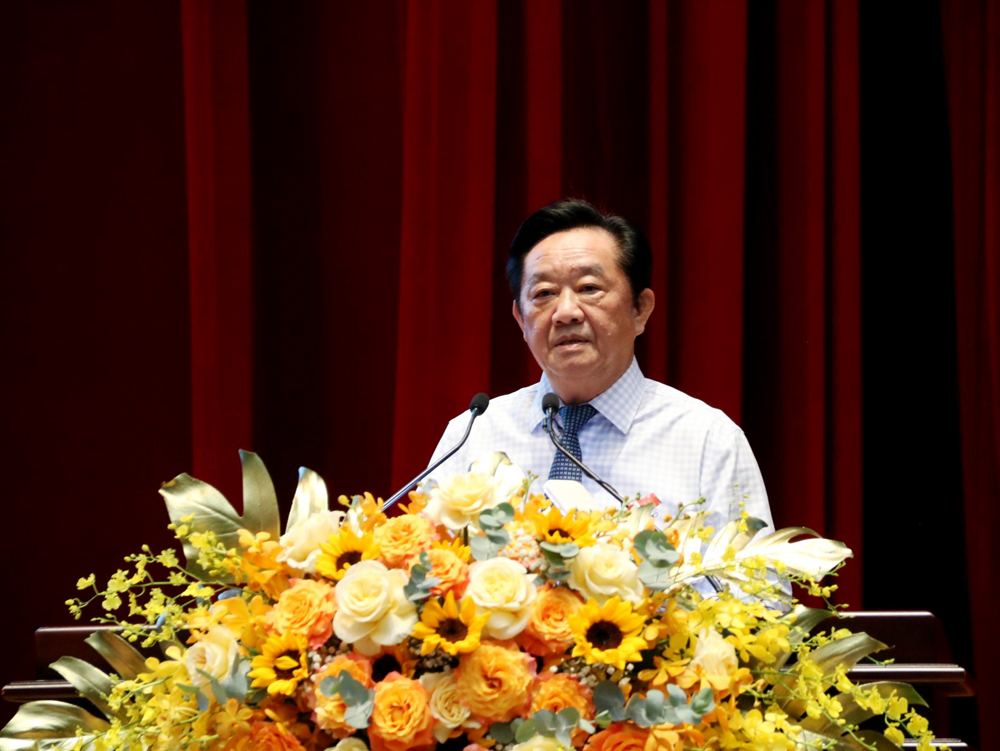
Mr. Nguyen Hoang Thao - Permanent Deputy Secretary of the Provincial Party Committee presents the process of awareness, views, and policies on Binh Duong's development model through the Provincial Party Congresses
In Binh Duong's social, cultural, and human development model, the province has proposed appropriate policies and viewpoints with the important features which are serving people and all for the comprehensive development of people. Both Binh Duong's original inhabitants and newcomers from localities across Viet Nam are considered Binh Duong people by the Party Committee and local authorities. In all documents of the Provincial Party Congress and at all levels, the responsibility of "ensuring social security and welfare, constantly improving the material and spiritual life of the people, etc." is clearly stated. There is no distinction between old and new, before and after, or local residents and immigrants. Binh Duong is currently one of the localities with the highest per capita income in the country. Since 2017, Binh Duong has been recognized as the first province in the country with no poor households according to Central government's standards. The province has built a project to develop social housing and worker housing for the 2021-2030 period with the goal of developing 86.877 social housing units. Specifically, in the 2021-2025 period, 46.377 units will be developed, and the following 2026-2030 period's is 40,500 units to ensure social security, especially stable housing so that workers can feel secure with their work and have a long-term attachment to the locality.
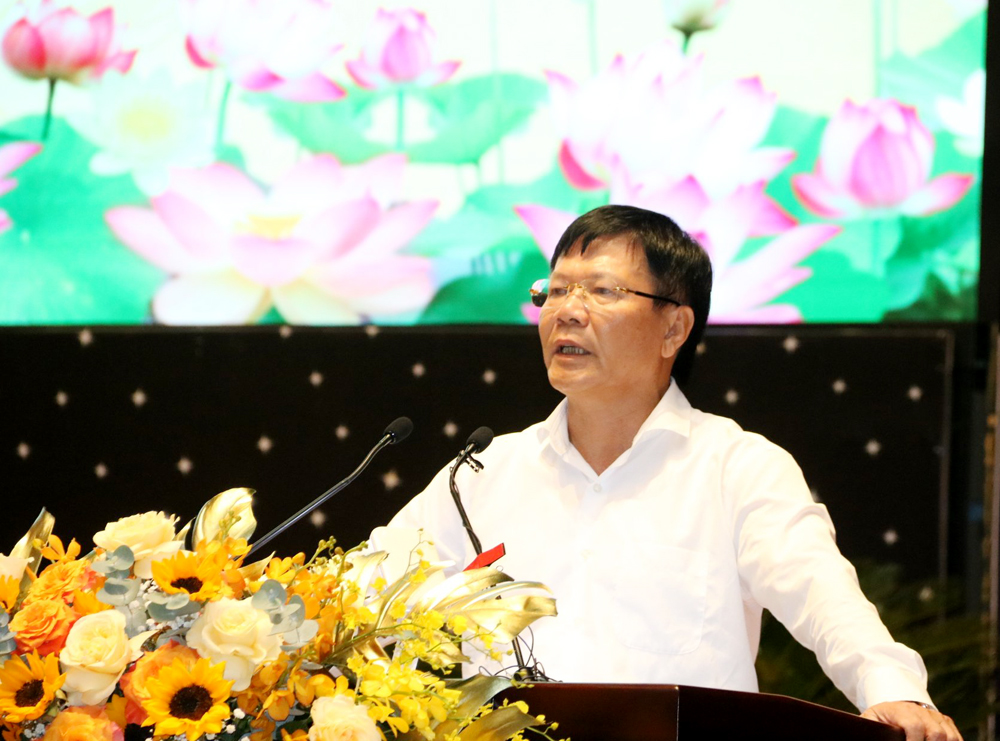
Prof. Dr. Nguyen Quang Thuan - Head of the Economic Subcommittee of the Central Theoretical Council presents Binh Duong's development model and some current issues
Talking about Binh Duong's development model, Prof. Dr. Nguyen Quang Thuan - Head of the Economic Subcommittee of the Central Theoretical Council said that the province's outstanding characteristics were the rapid implementation of industrialization, modernization, and economic restructuring towards industry, urbanization, and services on the basis of moving from "spreading flower mats" to not going alone but combining "triple helix" to develop smart urban areas. He emphasized the role of leading enterprises in the development of the province. State-owned enterprises, typically Becamex, have played a very important role in demonstrating the leadership of the State economy through joint ventures with foreign partners to form VSIP Joint Venture in Binh Duong province and having expanded production and business to 11 provinces and cities across Viet Nam; developed high quality urban areas, worth living cities; participated in developing social housing for workers, etc. The arterial roads in the province have been completed through the process of mobilizing resources, attracting investment, developing industrial infrastructure of the province's leading enterprises, completed by corporate capital, contributed effectively to sharing the budget burden.
Assessing Binh Duong's development model, Prof. Dr. Nguyen Xuan Thang - Member of the Politburo, Chairman of the Central Theoretical Council, Director of the Ho Chi Minh National Academy of Politics said that, looking back over a quarter of a century, Binh Duong had truly become a model of breakthrough development, a bright spot in promoting the location advantage of a province near a large urban area; in mobilizing investment resources, building infrastructure, promoting industrialization, modernization and urbanization.
Binh Duong province's development model is a successful combination of the ability to exploit and take advantage of rare advantages, converting disadvantages into advantages with a correct development strategy to break through and rise. Between the desire develop with forward-looking vision and the spirit of constant innovation; between the policy of paving the way, the Central government's facilitation mechanism institutionalized, integrated and converged with flexible working methods and creative application of localities; between the companionship and sharing of the government with enterprises and people; between the close association of economic growth goals with ensuring social security, human development, and ecological environment protection in the process of promoting industrialization, modernization, and urbanization.
"Overcome itself" to break through in a new period
Discussing at the Seminar, delegates pointed out shortcomings and limitations in Binh Duong's development model: The development model is not sustainable, growth does not rely much on total factor productivity (TFP) but mainly on increased capital and labor. In the long term, the sustainability of these sources is not firmly guaranteed. The service industry is still underdeveloped; the main workforce is still unskilled, immigrant, and unstable; production is mainly machining, assembling and processing; social structure is still backward, etc.
In addition to the limitations of the province, there are a number of difficulties at the regional level that are challenges for Binh Duong province in the new development period: Local interests still remain in the leadership thinking of each locality, regional integration has not become a real development need of regional authorities. The transport infrastructure connecting the Southern region of Binh Duong has been overloaded, leading to increased logistics costs in the province, directly affecting retaining existing investors and attracting new investors, losing Binh Duong's competitive advantage.
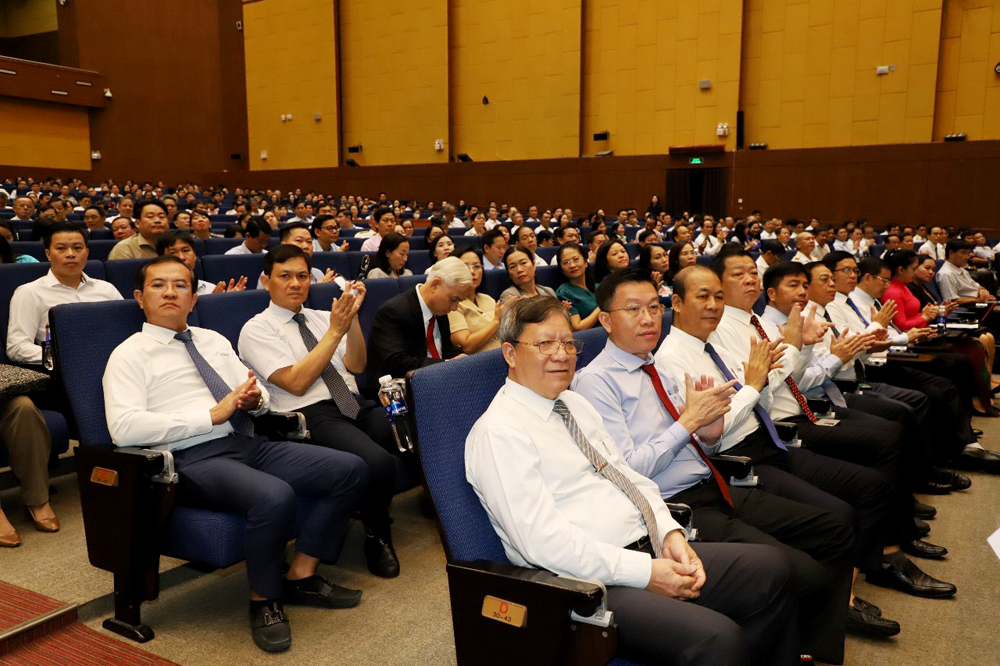
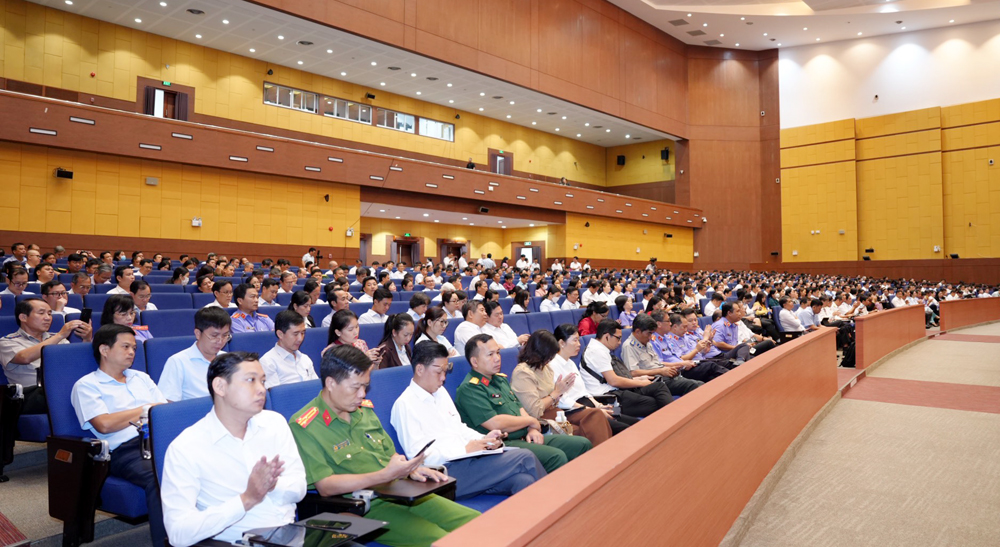
1,000 delegates including provincial and district leaders, scientists and researchers attend the Seminar
To achieve the common goals of the Viet Nam and the specific provincial goals in the period to 2030, with a vision to 2050, Binh Duong needs a master plan, clearly defining the province's development model in the coming period and vision to 2050. It is determined that a strong transition to a development model based on science - technology, innovation and high-quality human resources must be a breakthrough in development.
The province needs to continue to improve the production and business environment to attract and create production chains and commodity chains with headquarters located in Binh Duong province. Promoting service development, turning services into a main industry, focusing on service industries with high added value. At the same time, the province needs to focus on investing in connecting infrastructure projects within the province and connecting the region, especially projects connecting to seaports, e.g., Cai Mep, Thi Vai, Tan Cang, and Long Thanh airport, connecting to the North - South expressway, Ho Chi Minh City - Moc Bai expressway.
Besides, the province needs to concentrate on attracting talented and high-quality human resources to live, study and work in Binh Duong province, having an incentive mechanism to attract technology transfer to entities in Binh Duong province. At the same time, there is a need for Centers to support science - technology solutions and innovation to function as incubators for the development of science - technology and innovation. Focusing on completing the upgrade of Binh Duong province into a centrally run city with all the criteria set by the State. This is one of Binh Duong's achievable goals provided the above solutions have been successfully implemented.
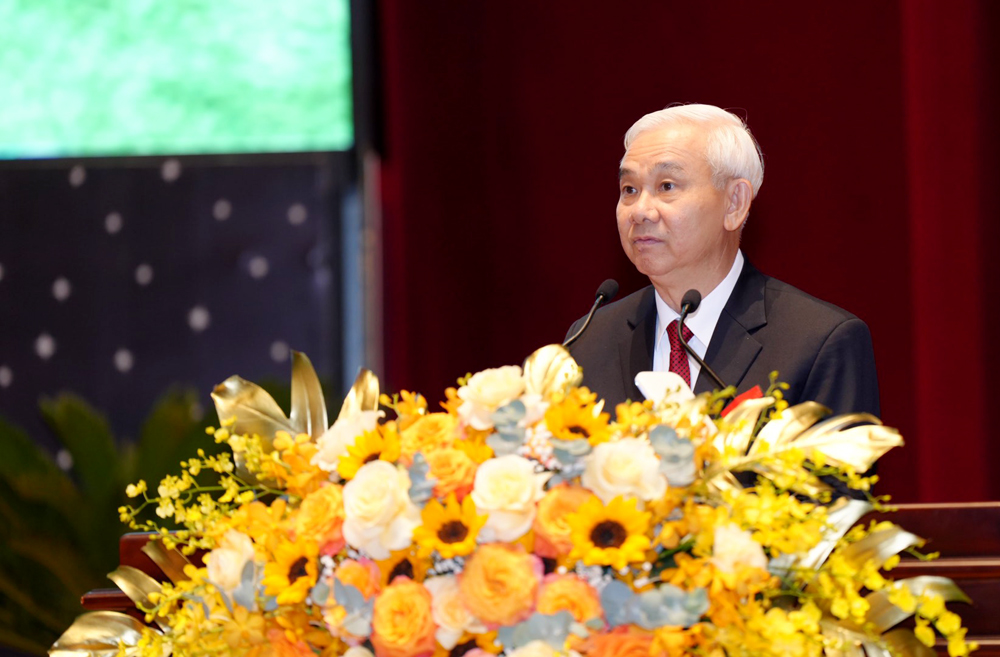
Mr. Pham Ngoc Thuan - General Director of Becamex IDC Corp presents the position, role, and characteristics of the state-owned enterprise development model in Binh Duong
Mr. Pham Ngoc Thuan - General Director of Becamex IDC Corp said that in the new period, Becamex had also proposed to include 1.700 hectares in the provincial planning to build a new generation industrial park: Smart ecological industrial park, Science and technology industrial park. This confirms that the strategy of prioritizing the development of new industrial models, aiming to attract technology and knowledge-intensive industries would determine the success of the goal of overcoming the middle-income trap like the Government leaders and the province had wished. Investors would be enterprises targeting high value-added activities. Labors will be scientists, researchers, and experts. And residents, wokers will gradually move to services or upgrade themselves to a new labor segment. Local trade and services would become global trade and services.
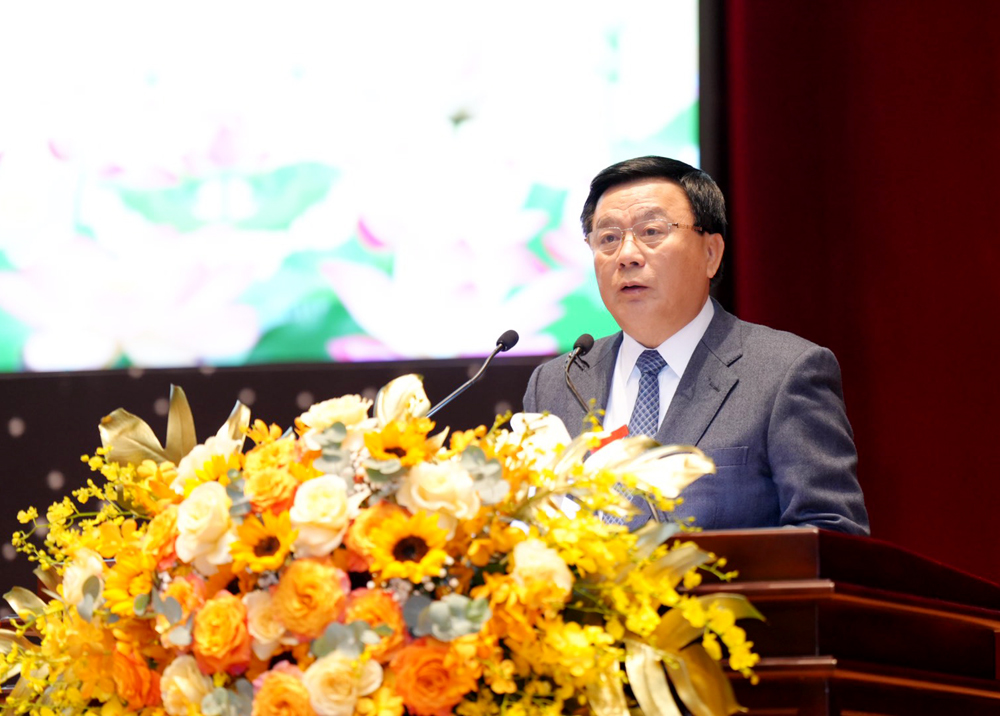
Prof. Dr. Nguyen Xuan Thang - Member of the Politburo, Chairman of the Central Theoretical Council, Director of the Ho Chi Minh National Academy of Politics speaks at the Seminar
Emphasizing the key tasks of Binh Duong in the coming time, Prof. Dr. Nguyen Xuan Thang suggested that Binh Duong needed to make efforts to "overcome itself", resolve the bottlenecks that have been pointed out, strengthen regional links, create new development space, gradually shift to attracting investment in industries with high technology content and high added value, train human resources, quality management team, etc. to create further breakthrough development in the new period.
From the good experiences and innovative ways of working in Binh Duong province, the Ministry, committees, and branches have studied the conditions and possibilities of application to other localities throughout Viet Nam; contributing to providing scientific basis for perfecting the theory of innovation policies and developing draft documents to be submitted to the 14th Party Congress.
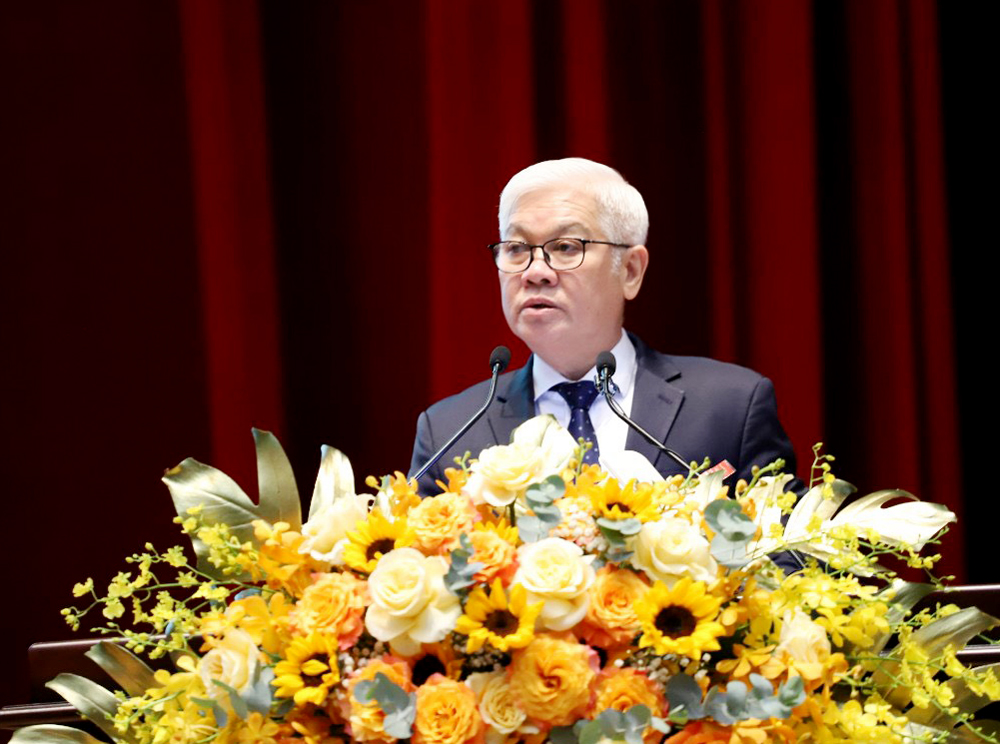
Provincial Party Secretary Nguyen Van Loi speaks at the Seminar
Provincial Party Secretary – Mr. Nguyen Van Loi affirmed that it was an honor for Binh Duong to be chosen by the Central Government to summarize the development model as a typical model of local development at the provincial level in Viet Nam during the innovation period. This was a great encouragement and support for the Party Committee, government, enterprise community and people of Binh Duong. The analysis, evaluation and proposals at the Seminar would also help the province determine its vision, goals, key directions, strategic breakthroughs and development motivation until 2050.
On this occasion, the Academy of Politics Region II signed a cooperation agreement with Binh Duong School of Politics and the Department of Science and Technology on training and scientific research.
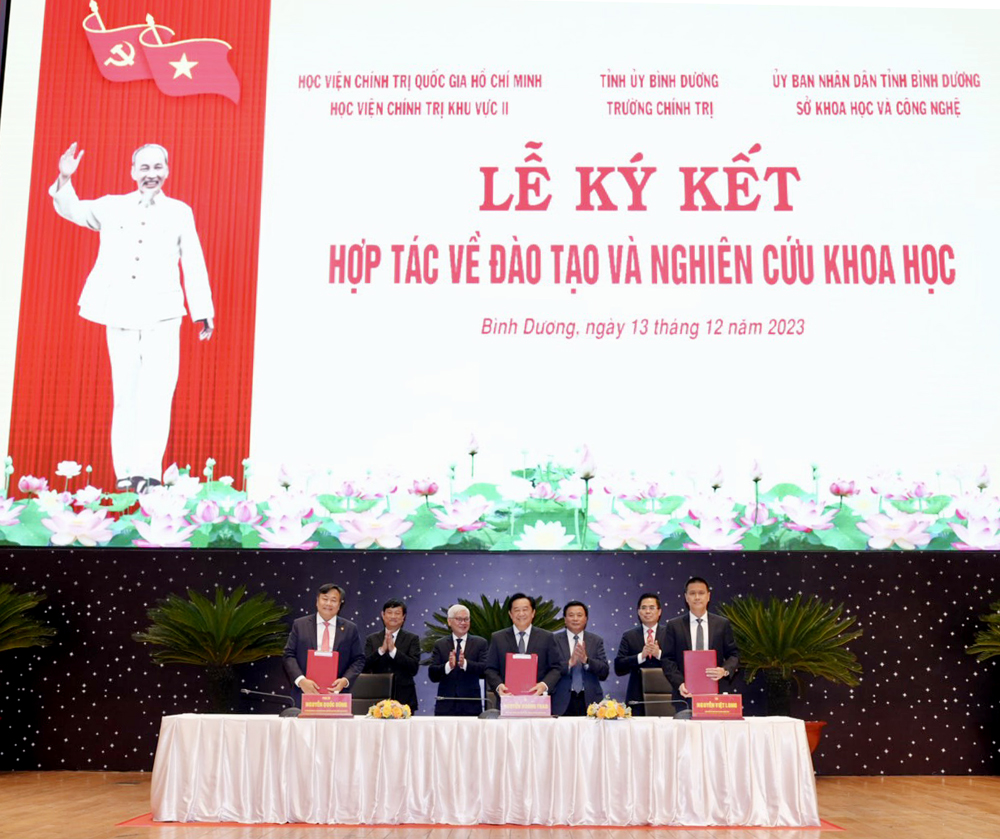
Memorandum of Understanding signing ceremony between the Academy of Politics Region II, the Binh Duong School of Politics and the Department of Science and Technology
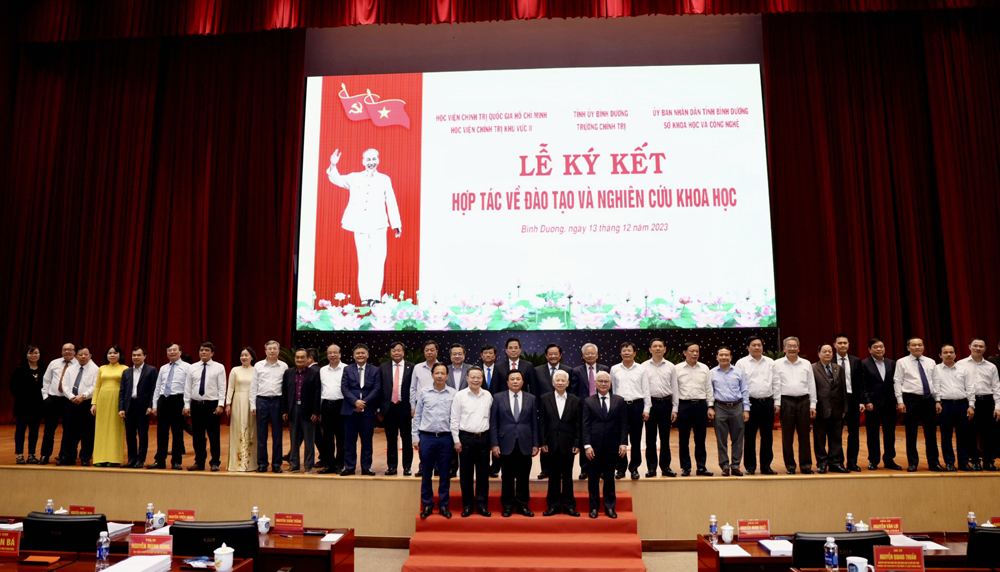
Delegates take a souvenir photo